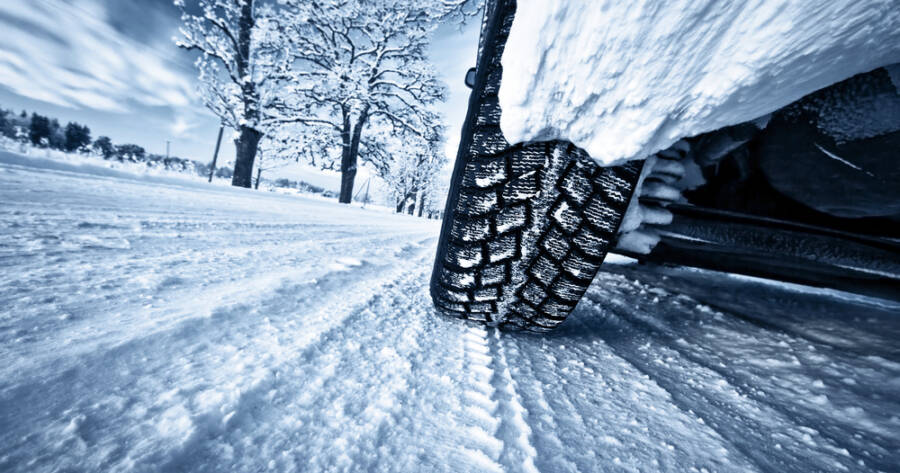As the chill of winter starts to set in, it’s time to prepare for more than just the festive season. Your vehicle, much like your wardrobe, requires some special attention to navigate the colder months safely and efficiently. Adequately winterizing your vehicle might help enhance its performance and reduce the risk of unexpected breakdowns, though outcomes may vary based on various factors.
Inspect and Change Your Tires
Winter conditions often lead to slippery roads. For regions that experience snow and ice, it might be advisable to switch to winter tires, as they are designed to provide better traction.
If winter tires aren’t an option, ensure your all-season tires are in good shape with appropriate treads. Regularly checking tire pressure is crucial as it can drop with colder temperatures, potentially affecting handling and fuel efficiency.
Check the Battery
Cold weather may strain your vehicle’s battery, leading to unexpected failures. Inspecting the battery’s health can be a proactive move to prevent inconvenience.
If your battery is over three years old, you might consider having it tested by a professional. Cleaning the battery terminals can help maintain a good connection, and ensuring the battery is well-secured can prevent damage caused by vibrations.
Inspect Fluid Levels and Quality
Antifreeze, or coolant, is crucial for protecting your engine during winter. Checking its levels and concentration can be essential. A 50/50 mix of antifreeze and water is generally effective, but it’s wise to verify the manufacturer’s recommendations for your vehicle.
Additionally, be sure to examine your engine oil, as some experts suggest a thinner oil might reduce stress on the engine during cold starts. Always consult your owner’s manual or a professional mechanic to determine what is best for your specific vehicle.
Examine the Heating System
Ensuring your vehicle’s heating system is functioning properly may contribute to a safer and more comfortable drive. Test your defroster and heater before winter sets in, paying attention to airflow and temperature.
If there are issues or inconsistencies, a professional diagnostic could identify hidden problems. While it might seem minor, a working heating system also assists in keeping the windshield clear from fog, improving visibility.
Maintain Windshield and Wipers
Winter driving requires optimal visibility, making it crucial to inspect your windshield and wipers. If your wipers are leaving streaks or aren’t functioning effectively, consider replacing them with winter-specific wipers designed to handle snow and ice. It’s also advisable to fill your windshield washer tank with a solution rated for low temperatures as this can assist in maintaining clear visibility even in extreme weather.
Assess the Brakes
Winter roads can be particularly hazardous, making brake performance vital. If you notice any signs of wear, such as squealing or reduced responsiveness, professional inspection might be wise.
Though the cold weather itself doesn’t directly affect brakes, the conditions can certainly amplify any existing issues. Ensuring your brakes are in top condition may provide more confidence and security in winter driving scenarios.
Test Exterior Lights and Indicators
Diminished daylight increases reliance on your vehicle’s lighting system. Regularly testing headlights, taillights, and indicators could improve visibility for you and other drivers.
Replacing dim or non-functioning bulbs promptly is recommended. If your lights appear fogged or yellowed, a lens restoration kit might help enhance their brightness and range marginally.
Keep an Emergency Kit
Preparing for unexpected situations could be invaluable during winter. An emergency kit, including items such as blankets, flashlights, jumper cables, non-perishable snacks, and a first-aid kit, serves as a precautionary measure.
While these items might not prevent all emergencies, having them on hand can be reassuring. Consider also including a small shovel, sand, or kitty litter for extra traction if your vehicle gets stuck.
Consider Professional Maintenance
While many winterizing tasks can be performed at home, sometimes it could be beneficial to seek professional help. A mechanic might offer a thorough inspection to catch potential problems that aren’t immediately visible. Many service centers provide winterization packages, which can simplify the process by addressing multiple areas of concern at once.
Learn More Today!
Winterizing your vehicle encompasses various proactive steps that might contribute to safer and more reliable winter driving. From inspecting tires and batteries to ensuring efficient heating and lighting systems, this all-encompassing approach aims to prepare your vehicle for the colder months ahead.
While these suggestions can’t guarantee prevention of all winter-related vehicle issues, they provide a foundational strategy for maintaining optimal performance. As always, consulting trusted professionals for personalized advice based on your specific vehicle and driving conditions can further refine your winter readiness plan.

